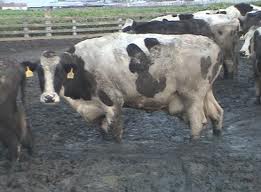David Kessler, former head of the Food and Drug Administration, has written an important article in today's New York Times, which will likely be ignored.
The central concept which underlies what he is saying is when it comes to lethal bacteria, you do not want to wound the tiger, you need to kill it. So, if you want to treat a human being, or any mammal, with an antibiotic to kill a particular bacteria, you had better use a lethal dose of antibiotic or you will surely see the emergence of resistant bacteria.
(There is often some confusion, caused by the language we use here. When we treat a patient with an antibiotic, the drug is aimed not at the patient's tissues but at the bacteria living in the patient's tissues or in his blood. We cannot ask the bacteria to open up their mouths and swallow the pill, so we give it to the human being, who swallows the pill, which enters his blood stream and the antibiotic circulates in the blood, hopefully to bathe the bacteria in the antibiotic and kill them. It is the bacteria not the patient, not the human being, who become resistant to the antibiotic. The human being is simply the host for those bacteria.)
Those bugs who were not killed by a low dose and which have genes which allow them to survive a low dose attack, can then pass on genes which provide resistance to even higher doses of antibiotics to their progeny. The antibiotics have "selected" the strongest bugs: It's a variation of the "anything which does not kill you will make you stronger" meme, but on a microbiological level.
Resistance to antibiotics occurs when these drugs are used too often, or in inadequate doses. We try to encourage doctors to treat human patients with antibiotics only when they are reasonably sure they are treating a bacterial infection, and then to engage in overwhelming force, a sort of shock and awe attack. But 80% of all antibiotics sold in this country are not used for people--they go to cows and other livestock, in small doses, for two reasons: 1. Most cows are no longer allowed to wander grassy fields but are penned up in feed lots, standing in manure. They get infected and the antibiotics allow them to survive life in this literal cesspool. 2. Somehow, livestock fed antibiotics seem to grow faster.
 Exactly how many cows get antibiotics is not known, because antibiotic sales data is a closely guarded secret and all attempts at making it public by law have been thwarted by agribusiness and the pharmaceutical industry. When Diane Feinstein and Kirsten Gillabrand tried to introduce legislation to report data the FDA already collects, their efforts were rebuffed by a powerful agribusiness/pharmaceutical lobby.
Exactly how many cows get antibiotics is not known, because antibiotic sales data is a closely guarded secret and all attempts at making it public by law have been thwarted by agribusiness and the pharmaceutical industry. When Diane Feinstein and Kirsten Gillabrand tried to introduce legislation to report data the FDA already collects, their efforts were rebuffed by a powerful agribusiness/pharmaceutical lobby.
Henry Waxman (D-California) and Louise Slaughter (D-NY) have introduced a bill to require food producers to disclose how often they feed antibiotics to animals and this, too, is being fought by pharmaceutical companies and agribusiness.
Predictably, maybe not this year, maybe not next, but some year in the not too distant future, this will all come back to bite us. We'll have antibiotic resistant super bugs which will make Methicillin Resistant Staph, E. coli and resistant gonorrhea look like warm up acts. And this will happen because a few people were determined to protect their profits, public health be damned.
Here we have the intersection of government, business and science and the first two are ignoring what the third has to say, at the peril of everyone.
This has happened before, with global warming, with healthcare insurance, but in terms of what will actually become most cataclysmic, the drug resistant bacteria will surely get humankind before the effects of global warming or the lack of health insurance do.


No comments:
Post a Comment